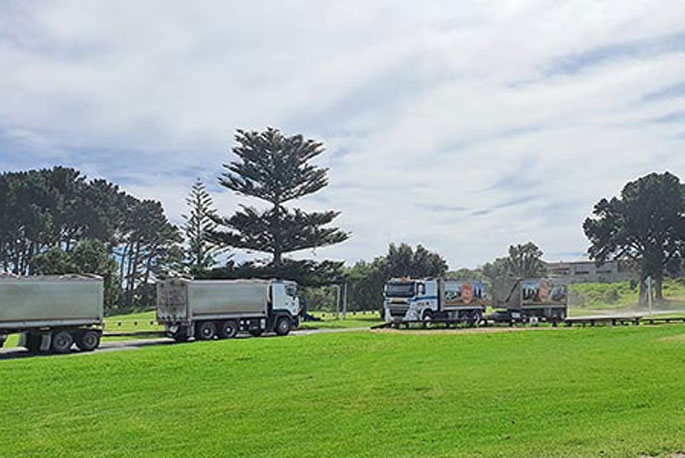Over the past 26 years, Whakatāne District Council has received more than $311,000 in access royalties from the sand mining operation at Thornton beach.
The figure were revealed to councillors in a report presented to a projects and services meeting recently.
The report from community experience general manager Georgina Fletcher followed a request from councillor Gavin Dennis for more information about the Thornton sand mine after receiving numerous queries over the past six months from residents concerned about the mine.
Their concerns centre around the increasing amounts of sand being taken from the area and whether the small community is being adequately recompensed for the mining operation.
Thornton resident Heyden Johnston says when the council last renewed the consent, in 2006, the community was assured that royalties for the mining operation would be spent for the benefit of the Thornton community.
He says truck movements have increased greatly in recent years.
'So we can safely say that a large majority of that sand has been moved during this last consent period. Truck movements would have trebled over that last period.”
He says the agreement was made with the council through his father, the late Whakatāne district councillor George Johnston, and another long-time advocate for the Thornton community, Don Atkinson.
Fletcher's report makes no mention of this agreement but says the council allocates the royalties to a general rural leisure account which is used for all the council's rural reserves, including Thornton.
'It's not quite as straightforward as, ‘this is money that's earned in Thornton; therefore, we can buy something with it each year',” she says.
'We receive the royalty payment and a lot of the funding from those rural reserves account goes into maintaining reserves, such as the mowing of each of our reserves each month. It's not to say that we won't buy things in the Thornton area … it's not as simple as some people in the community have understood it to be.”
According to her report, a beach shower to replace the one vandalised in 2020, and picnic tables, are due to installed at Thornton in June or July followed by an electric barbecue later in the year.
Fletcher told councillors that what the council spent on Thornton each year is roughly the same as what it receives from the mine royalties, which has been between $20,000 and $28,000 a year for the past five years.
However, Johnston says for the public use the Thornton area got, a barbecue table and a shower are completely insufficient support from the council, 'regardless of where the money comes from”.
'Those are things the council should be doing anyway, like cleaning the toilets and mowing the lawn. The funds from the mining should be on top of that. They put next to nothing into Thornton because they see it as just a poor cousin of Whakatāne and Ōhope - out the back, who cares.”
Watchorn Transport holds the mining permit and resource consent to mine sand from the area west of Thornton Beach Motor Camp, located within the Whakatāne Western Coastal Recreation Reserve.
The consent was last renewed in 2006 and is due to expire at the end of May 2026.
Fletcher says the royalties on the access consent, which are charged per cubic metre of sand taken, are up for review this year.
Conditions of the resource consent restrict heavy vehicle movements to 200 a month and 30 a day, though there are exceptions for school and public holidays.
No work can be done on weekends, public holidays or between December 23 and January 30 and hours of operation are restricted during mid-year school holidays.
Also, as part of the consent, Watchorns must carry out rehabilitation and mitigation planting.
The report says actual vehicle movements range from six to 15 per day and average between eight and 11, well within what is consented.
The average volume of sand extracted a year is just over 10,000 cubic metres, however, Fletcher says the amount taken has increased in the past five years and is now around 21,000 to 22,000 cubic metres.
The operation is said to provide many benefits to the local economy, including employment.
Most of the sand taken is used for domestic and commercial construction within the Whakatāne and neighbouring districts and has been used in key projects such as the Ōpōtiki Harbour development.
'If this operation did not exist, sand would have to be sourced from outside the district, which would result in increased costs and greater environmental impact through transportation,” the report says.
-Local Democracy Reporting is Public Interest Journalism funded through NZ On Air




1 comment
ANOTHER
Posted on 16-05-2022 22:45 | By The Caveman
Council "business" not known to the ratepayers !!!!!
Leave a Comment
You must be logged in to make a comment.